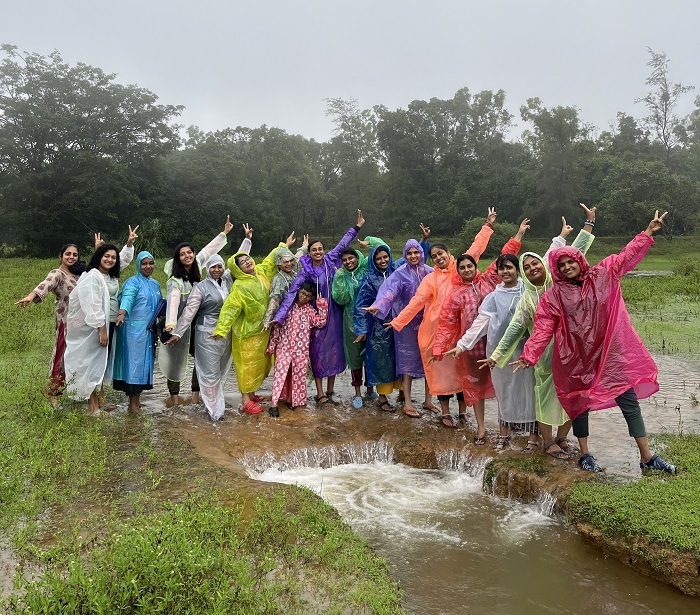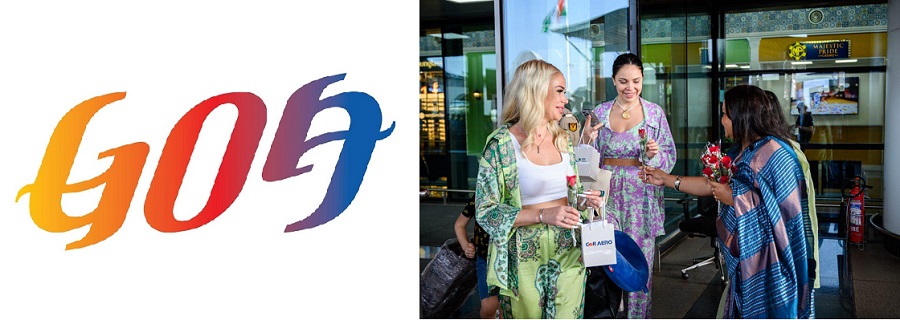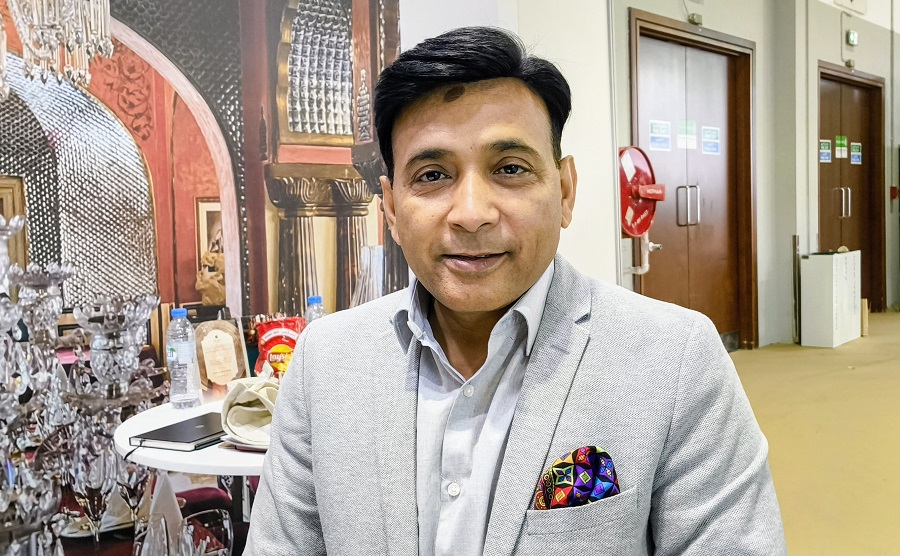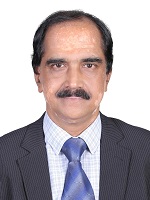Direct contribution from Tourism to national GDP is just 2.60% and indirect contribution is 2.40%; Goa leads the state rank folowed by Rajasthan and Odisha
By Ravisankar K.V.
India, a land celebrated for its unparalleled diversity in cultures, ethnicities, and natural landscapes, finds itself at a critical juncture in its tourism journey. Despite its immense potential, the nation is grappling with a stark reality: inbound tourism (Foreign Tourist Arrivals – FTAs) is not just slow, but alarmingly stagnant. This comes at a time when global travel has largely rebounded, and many of India’s regional competitors are thriving. The Indian Association of Tour Operators (IATO) has sounded a clear alarm for 2025, urging immediate and cohesive action to prevent further decline and re-establish India’s position on the global tourism map.
The Stagnation in Numbers: A Cause for Concern


While countries like Thailand, Vietnam, and the UAE have demonstrated impressive post-COVID recovery, often surpassing pre-pandemic business levels, India’s FTAs remain flat at best, or even below 2019 figures. In the first half of 2024, FTAs in India lagged behind by 10% compared to the first half of 2019. This stagnation is particularly concerning given that international travel globally has already returned to 5% above its pre-COVID levels. The disparity is further highlighted by India’s own outbound travel, which has seen a robust 12% growth (CMD), indicating a significant imbalance in the country’s tourism equation.
GDP Contribution: A Mixed Recovery


According to Union Minister for Tourism and Culture Shri Gajendra Singh Shekhawat’s statement in the Lok Sabha on November 25, 2024, and updated using National Account statistics 2024, the tourism sector’s contribution to India’s Gross Domestic Product (GDP) has shown a recovery, but still falls short of its potential.
| Financial Year | Total Tourism GDP Contribution | Direct Contribution | Indirect Contribution |
| 2018-19 | 5.01% | 2.61% | 2.40% |
| 2019-20 | 5.18% | 2.69% | 2.49% |
| 2020-21 | 1.50% | 0.78% | 0.72% |
| 2021-22 | 1.75% | 0.91% | 0.84% |
| 2022-23 | 5.00% | 2.60% | 2.40% |
While the 5.00% contribution in FY23 represents a significant recovery from the pandemic’s nadir of 1.50% in FY21, the sector’s contribution has not exceeded 10% in any financial year. This contrasts sharply with the performance of several Indian states, which, through strategic branding, marketing, and budget allocation, have managed to achieve much higher percentages. The tourism sector also plays a crucial role in employment, creating 7.6 crore jobs in FY23.
State Success Stories: A Blueprint for National Growth?
The disparity between the national contribution and the robust performance of certain states underscores the potential that remains largely untapped at the macro level. Many states have strategically invested in their tourism sectors, yielding impressive returns:


- Goa: According to IBEF data, leads with a remarkable 16.43% contribution to its Gross State Domestic Product (GSDP) and directly employs approximately 35% of its population in the sector.
- Rajasthan: Tourism contributes approximately 15% to its GSDP (RajRAS), driven by its rich heritage and vibrant culture.
- Odisha: Sees tourism contributing 13% to its GDP (Invest Odisha).
- West Bengal: Reports a 13% contribution to GDP and a 15% growth rate, with the sector providing around 6% of total employment, while analyzing various data from government and other financial institutions.


- Kerala: “God’s Own Country” attributes approximately 10% of its GDP to tourism, but the growth has been stagnant for almost a decade. Kerala is the only state in India, other than Tamil Nadu, that has not increased its marketing budget since 2016.
- Gujarat: The sector’s contribution to the state’s GDP reached around 10.2% in 2022, a significant increase from 5% in 2015 (Statista), generating between 0.6 to 0.7 million jobs. Gujarat is a classic example of how significant budget allocation for tourism and a robust marketing strategy can work wonders for Indian states.
- Sikkim: Tourism accounts for nearly 10% of the GSDP.
- Maharashtra: Tourism contributes around 9% to its GSDP. The majority of Maharashtra’s tourism contribution comes from business travelers and short break travels due to its commercial importance and strategic location.
- Uttar Pradesh: Despite being a leading destination for domestic tourists, particularly religious tourism, its tourism sector contributes around 8% to its GDP.
- Madhya Pradesh: Tourism contributes approximately 7% to its GDP.
- Jammu and Kashmir: The sector contributes roughly 7% to its GSDP, translating to approximately Rs 18,550 crore in nominal terms.
- Meghalaya: Tourism contributes approximately 7% to the state’s GDP, making it the highest among North Eastern states.
- Assam: Tourism contributes approximately 5.5% to its GDP, accounting for roughly 10.5% of total employment.
- Uttarakhand: Tourism accounts for around 4.4% of the state’s GSDP and approximately 2% of its total employment.
- Arunachal Pradesh: Direct value added from tourism is 2.78% of GDP, rising to 5.83% with indirect effects, and directly employing 4.59% of the workforce.
- Telangana: The direct contribution is around 2.78%, rising to 5.83% with indirect effects, with a goal to reach 10% or higher.
The very sad state of affairs is that many state tourism departments lack proper base data, and a thorough analysis of tourist data is often absent. The exact percentage contribution of the tourism sector to Andhra Pradesh’s Gross Domestic Product (GDP) is not explicitly available in public records. However, it is mentioned that tourism is a significant industry in India, contributing around 6.8% to the national GDP and employing over 41 million people. Andhra Pradesh, with its diverse attractions, is highlighted as having significant tourism potential. Undivided Andhra Pradesh was once among the top three states in terms of total international and domestic arrivals and revenue contribution to the state GDP. Now, Telangana’s GDP contribution from tourism is merely 2.78%.
These state-level successes underscore the potential for a more impactful national strategy.
Hurdles on the Path: Visa Complexities and Perception Challenges
Several factors are actively deterring inbound travel. The visa and entry processes remain a significant impediment. While the introduction of e-visas has offered some facilitation, it is deemed “wholly inadequate” for group travel, MICE segments, or long-haul journeys burdened by bureaucratic steps. The reliance on seamless day-to-day travel conduct is hindered by complex entry norms and physical/geographic constraints.
Furthermore, global perceptions around travel to India have become fragile, influenced by isolated events such as a terror attack in Jammu. As IATO points out, “perceptions of travel often supersede the realities of travel.” This necessitates a proactive investment in overt and consistent communication, undertaking safety audits, and implementing safety-focused programs targeting confident destinations to rebuild trust.
IATO’s Alarm Call: “India’s Inbound Tourism is a Sleeping Giant”


Mr. Ravi Gosain, President of the Indian Association of Tour Operators (IATO), articulates the core issue with urgency: “India’s inbound tourism is a sleeping giant. We have the product, the history, the culture and diversity, but we just do not have unity and a global banner. To compete, we need a better partnership between the private and the public sector, ways to simplify visa regulations, and a strong push in marketing to allow India to get back on the world stage and be considered one of the top travel destinations. The time to act is not tomorrow; it is now.”
The Way Forward: IATO’s Prescription for Revival
IATO emphasizes a collaborative approach across all applicable areas to awaken this sleeping giant. Their key recommendations include:
- Re-establishing Marketing Development Assistance (MDA): This scheme would empower small and medium-sized operators to effectively compete in the global arena.
- Establishing an “India Tourism Board”: A unified board would ensure better decision-making and intervention, presenting India as a cohesive tourist destination rather than fragmented efforts by individual states and ministries.
- Investing in World-Class Infrastructure: Prioritizing infrastructure development for high-visitor circuits to meet international destination tourism standards.
- Launching “Incredible India 2.0”: A nationwide campaign based on powerful storytelling, appropriate digital outreach channels, and collaboration with global influencers to redefine India and re-enter the hearts and minds of travelers worldwide.
India possesses all the intrinsic elements to become a world-leading travel destination: heritage, culture, nature, spirituality, and hospitality. However, as IATO warns, these opportunities risk being wasted without immediate policy commitment, cohesive brand positioning, and effective execution in the marketplace. The call to action is clear: now is the time to awaken the sleeping giant of India’s inbound tourism, not just for economic benefit, but for the enhancement of India’s global standing.
Hurdles on the Path: Visa Complexities and Perception Challenges
Several factors are actively deterring inbound travel. The visa and entry processes remain a significant impediment. While the introduction of e-visas has offered some facilitation, it is deemed “wholly inadequate” for group travel, MICE segments, or long-haul journeys burdened by bureaucratic steps. The reliance on seamless day-to-day travel conduct is hindered by complex entry norms and physical/geographic constraints.
Furthermore, global perceptions around travel to India have become fragile, influenced by isolated events such as a terror attack in Jammu. As IATO points out, “perceptions of travel often supersede the realities of travel.” This necessitates a proactive investment in overt and consistent communication, undertaking safety audits, and implementing safety-focused programs targeting confident destinations to rebuild trust.
IATO’s Alarm Call: “India’s Inbound Tourism is a Sleeping Giant”
Mr. Ravi Gosain, President of the Indian Association of Tour Operators (IATO), articulates the core issue with urgency: “India’s inbound tourism is a sleeping giant. We have the product, the history, the culture and diversity, but we just do not have unity and a global banner. To compete, we need a better partnership between the private and the public sector, ways to simplify visa regulations, and a strong push in marketing to allow India to get back on the world stage and be considered one of the top travel destinations. The time to act is not tomorrow; it is now.”
The Way Forward: IATO’s Prescription for Revival
IATO emphasizes a collaborative approach across all applicable areas to awaken this sleeping giant. Their key recommendations include:
- Re-establishing Marketing Development Assistance (MDA): This scheme would empower small and medium-sized operators to effectively compete in the global arena.
- Establishing an “India Tourism Board”: A unified board would ensure better decision-making and intervention, presenting India as a cohesive tourist destination rather than fragmented efforts by individual states and ministries.
- Investing in World-Class Infrastructure: Prioritizing infrastructure development for high-visitor circuits to meet international destination tourism standards.
- Launching “Incredible India 2.0”: A nationwide campaign based on powerful storytelling, appropriate digital outreach channels, and collaboration with global influencers to redefine India and re-enter the hearts and minds of travelers worldwide.


India possesses all the intrinsic elements to become a world-leading travel destination: heritage, culture, nature, spirituality, and hospitality. However, as IATO warns, these opportunities risk being wasted without immediate policy commitment, cohesive brand positioning, and effective execution in the marketplace. The call to action is clear: now is the time to awaken the sleeping giant of India’s inbound tourism, not just for economic benefit, but for the enhancement of India’s global standing.
(Author is Managing Editor & Publisher of Tourism India and has been associated with the Travel and Tourism industry since 1988)
